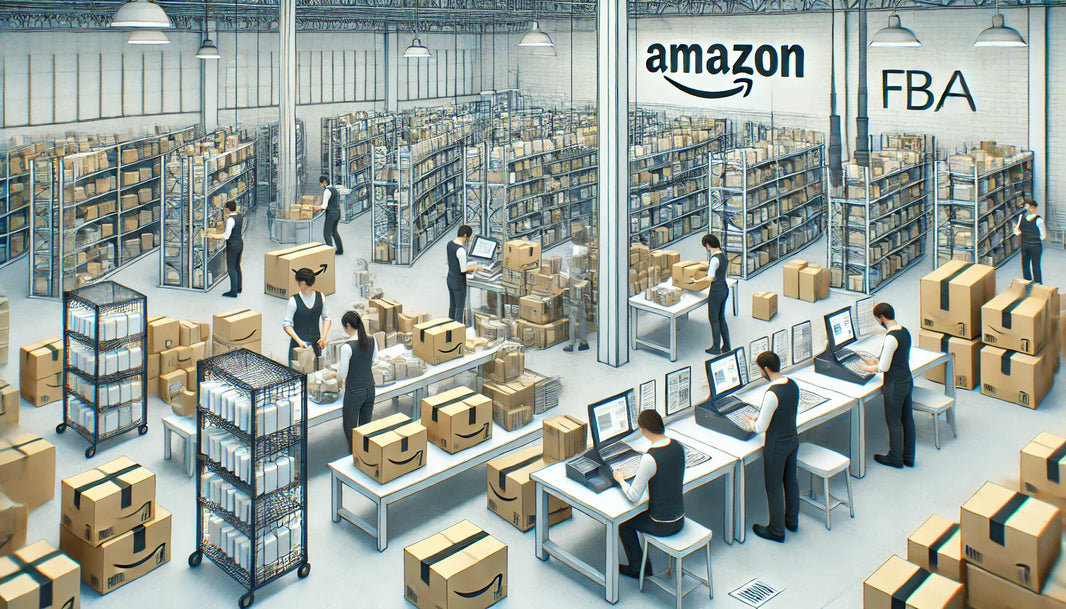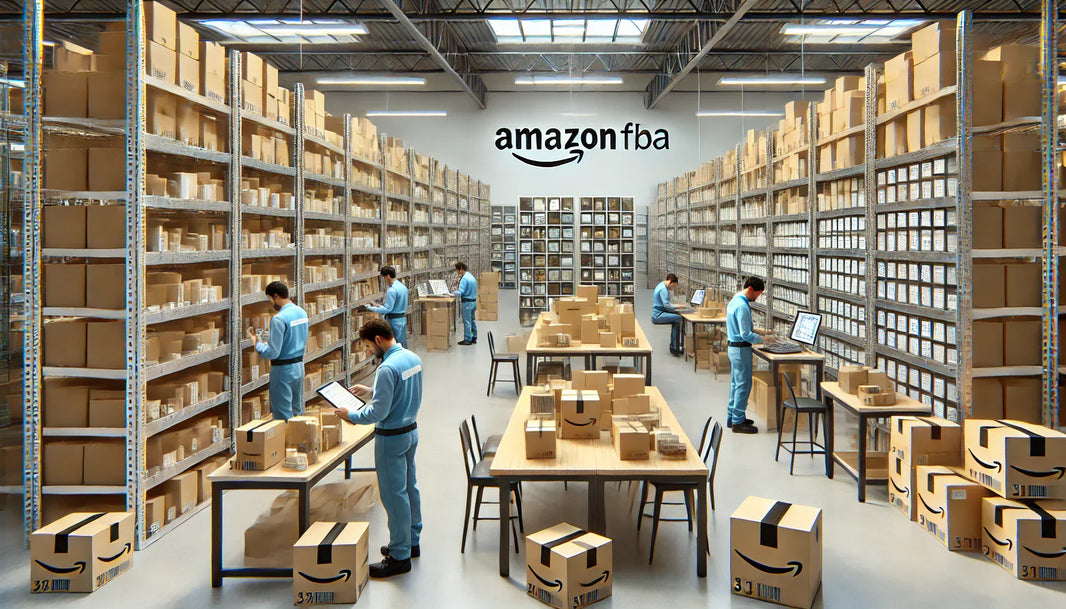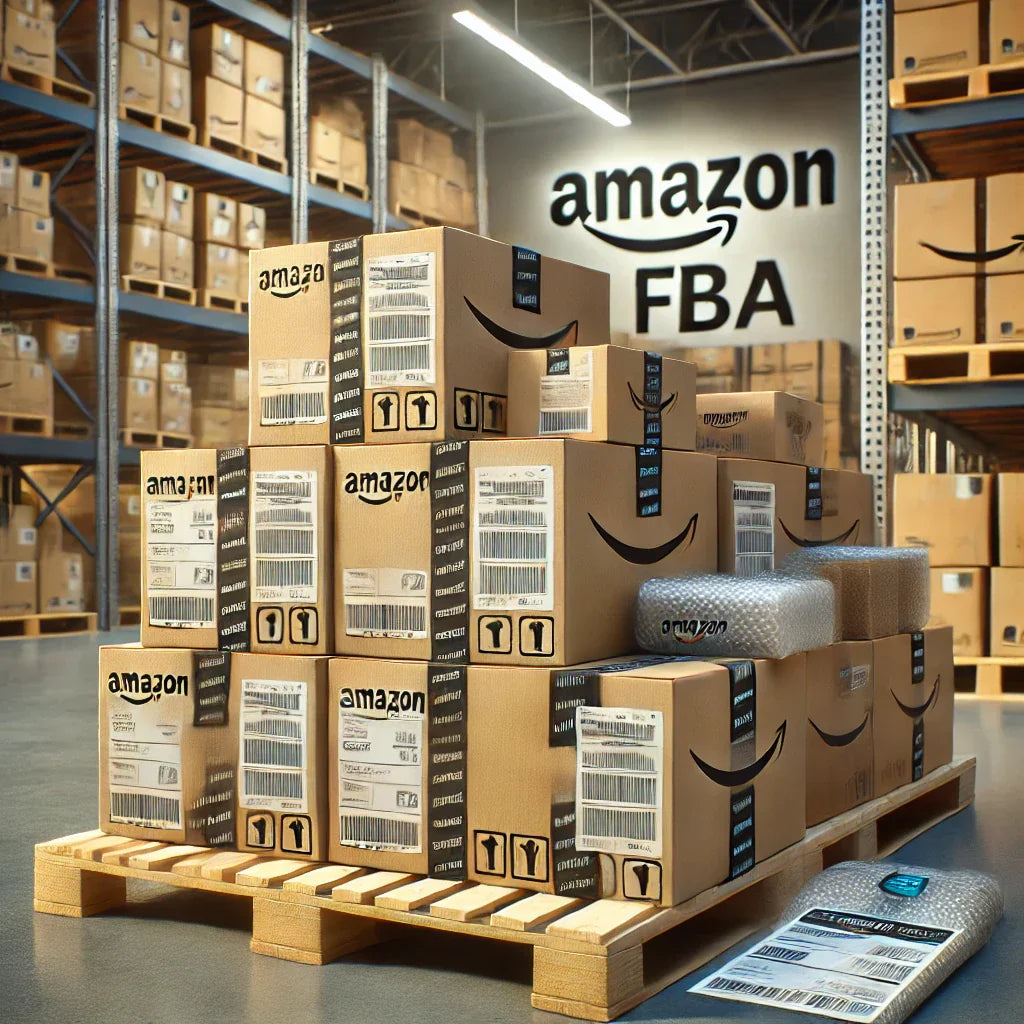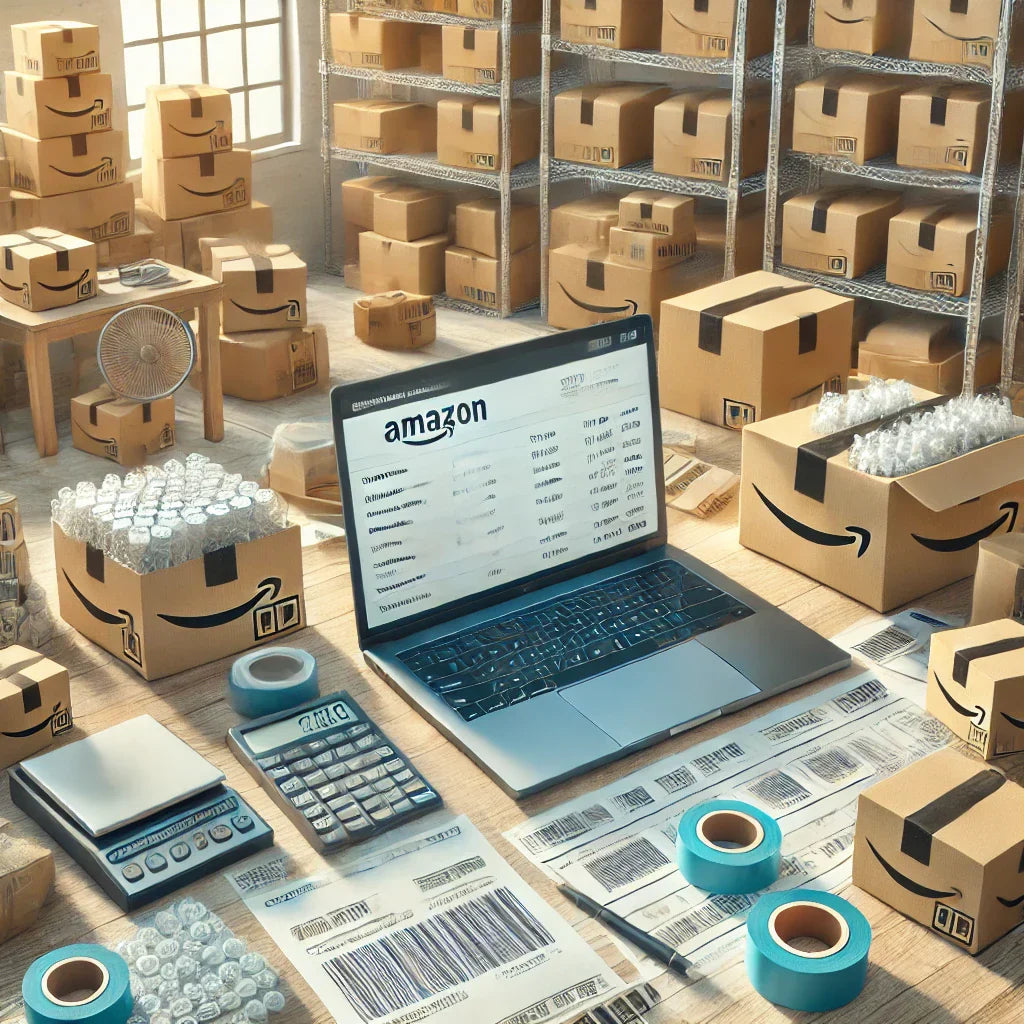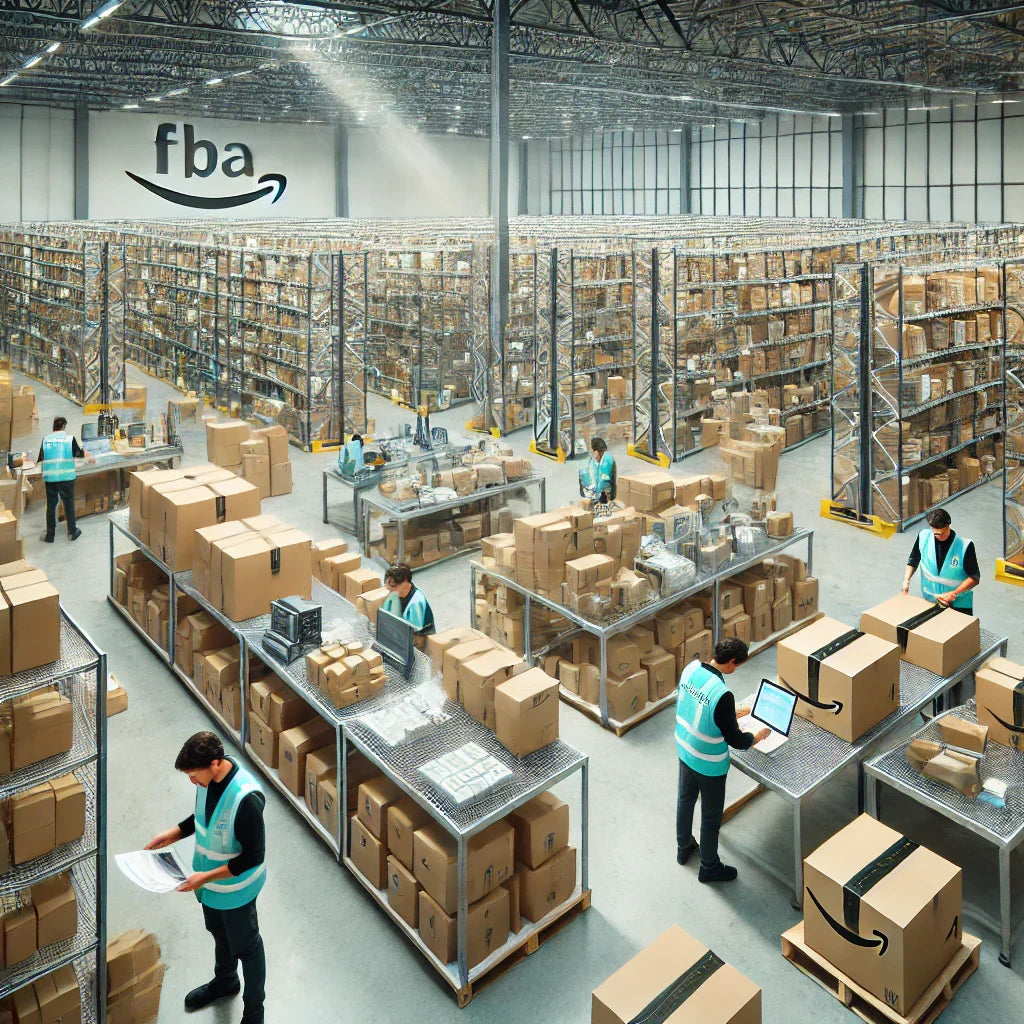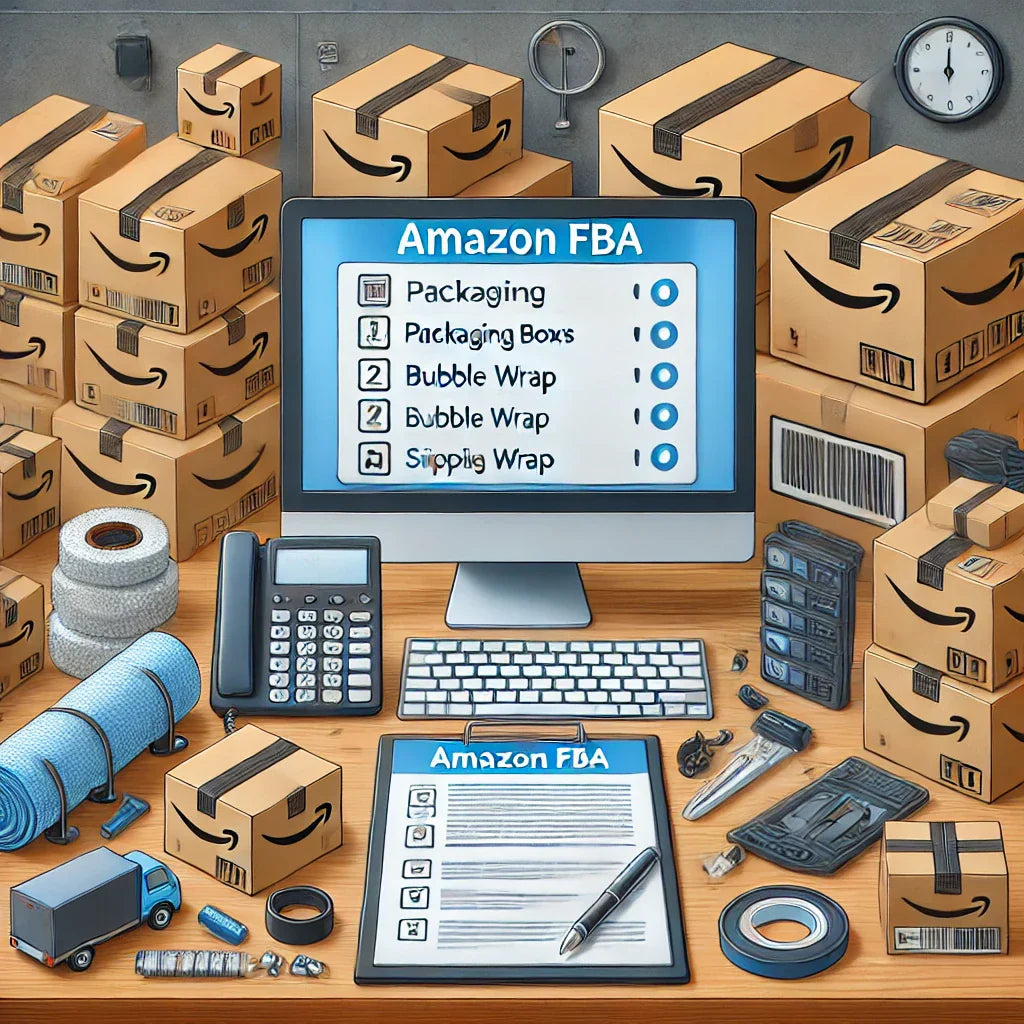Choosing the right third-party logistics (3PL) provider is a crucial decision for any business seeking to streamline its supply chain, optimize delivery times, and enhance customer satisfaction. With so many options on the market, each offering a range of specialized services, it can be challenging to determine which 3PL partner best aligns with your specific business needs. From warehousing capabilities and technology integration to scalability and cost-effectiveness, several factors play a role in making an informed choice. This guide will walk you through the essential criteria to consider when selecting a 3PL provider, helping you find a partner that not only meets but enhances your operational goals. Whether you're an e-commerce startup or an established manufacturer, understanding these factors is key to building a supply chain that supports your business’s growth and success.
Understanding What a 3PL Provider Offers
A third-party logistics provider, or 3PL, serves as an outsourced logistics partner, handling various parts of a business’s supply chain. These services typically include warehousing, order fulfillment, packaging, inventory management, and transportation. By leveraging a 3PL, companies can reduce the time and resources dedicated to logistics management, ultimately improving operational efficiency and allowing them to focus more on core business functions.
The choice of 3PL provider can affect every stage of the supply chain, from the speed of delivery to customer satisfaction. Before making your decision, it’s important to understand the full scope of 3PL services and how they align with your business's needs and goals.
Key Benefits of Partnering with a 3PL
When chosen wisely, a 3PL provider offers numerous advantages that can greatly benefit a business:
- Cost Savings: Outsourcing logistics can lower costs associated with warehousing, transportation, and staffing, as well as reduce the need for heavy capital investment.
- Expertise: 3PL providers bring industry knowledge, experience, and advanced technology that optimize logistics operations.
- Scalability: 3PLs offer flexibility to scale operations up or down based on demand, a valuable asset for businesses facing seasonal peaks or rapid growth.
- Focus on Core Competencies: Delegating logistics functions to a 3PL provider allows businesses to concentrate on product development, marketing, and other key areas of growth.
1. Identifying Your Specific Logistics Needs
When selecting a 3PL provider, the first step is to clearly define your business’s unique logistics requirements. Understanding what you need can prevent mismatched partnerships and enable you to select a provider with services that are directly aligned with your goals.
Questions to Define Your Needs
To pinpoint your logistics needs, consider the following questions:
- What is the nature of your product? (e.g., perishable goods, heavy machinery, apparel, etc.)
- What regions do you primarily serve, and where are your customers located?
- How important is speed in your delivery process?
- What is your current inventory volume, and do you anticipate growth in the near future?
These questions can help clarify the services, technology, and operational strengths a 3PL provider should have to support your business effectively.
Matching Services with Business Model
Different 3PLs offer a variety of specialized services that cater to distinct industries and business models. Some providers focus primarily on transportation, while others specialize in warehousing or order fulfillment. Identifying these distinctions will narrow down the field to providers with relevant expertise.
2. Evaluating the Range of Services Offered
Not all 3PL providers offer the same range of services. Choosing a provider with a service suite that matches your needs can have a significant impact on your logistics efficiency and, by extension, customer satisfaction.
Key 3PL Services to Consider
- Transportation Management: Covers freight management, shipping options, and transportation planning.
- Warehousing and Inventory Management: Services such as warehousing, stock management, and inbound/outbound logistics.
- Order Fulfillment: Picking, packing, and dispatching orders.
- Reverse Logistics: Managing product returns, refunds, and restocking.
Ensure that the 3PL provider you select can handle the specific areas you prioritize, whether it’s rapid order fulfillment for an e-commerce business or comprehensive inventory management for a larger manufacturer.
Specialized or Industry-Specific Services
Many 3PL providers specialize in industry-specific logistics services, such as cold storage for perishable goods, secure warehousing for high-value products, or tailored handling for oversized items. Opting for a provider experienced in your industry can enhance both operational efficiency and customer satisfaction.
3. Assessing Technology Integration Capabilities
In today’s digital-driven environment, advanced technology is essential for efficient logistics management. A 3PL provider’s technology infrastructure can greatly influence your operational success, enabling accurate inventory tracking, real-time order visibility, and improved communication across the supply chain.
Key Technologies to Look For
- Warehouse Management Systems (WMS): For tracking and managing inventory levels and locations.
- Transportation Management Systems (TMS): Helps in planning, executing, and optimizing the movement of goods.
- Inventory and Order Management Systems: Offers real-time tracking of inventory and orders, minimizing errors and improving customer satisfaction.
- Data Analytics and Reporting: Provides insights into inventory trends, delivery times, and other KPIs.
Partnering with a 3PL provider equipped with robust technology can significantly reduce manual errors, improve efficiency, and enhance transparency in your supply chain operations.
4. Evaluating Scalability and Flexibility
The ideal 3PL provider should be able to adapt to your business as it grows and evolves. Scalability is particularly important for businesses experiencing seasonal fluctuations or rapid expansion.
Flexibility in Demand Fluctuations
3PL providers that can accommodate high-demand periods without compromising service quality are essential for businesses in retail, e-commerce, and other sectors prone to seasonal peaks. This flexibility allows you to maintain optimal customer satisfaction levels during peak times and avoid unnecessary costs during slower periods.
Support for Business Expansion
If you plan to expand into new markets, a scalable 3PL provider can facilitate this transition. Look for a partner with a presence in regions you intend to enter or who has a network of partners to facilitate global reach.
5. Considering Cost Structure and Transparency
While cost is a significant factor, the cheapest 3PL provider may not always be the best choice. Understanding the cost structure and ensuring transparency in pricing can help avoid unexpected charges and ensure that you’re getting value for your investment.
Types of Pricing Models
- Transactional Pricing: Based on the number of orders or shipments processed.
- Volume-Based Pricing: Typically lower rates as the volume of goods increases.
- Customized Pricing: Tailored pricing plans based on specific business needs.
Transparency in billing practices is essential to avoid hidden fees. Choose a 3PL provider that can explain their cost structure clearly and is willing to provide regular cost reports.
6. Assessing Provider Reliability and Performance History
Partnering with a reliable 3PL provider can significantly improve your supply chain operations and customer satisfaction. Evaluating a provider’s track record will give you insights into their reliability and service quality.
Key Performance Indicators (KPIs) to Review
- On-Time Delivery Rates: The percentage of orders delivered within the promised timeframe.
- Order Accuracy Rate: The consistency with which orders are picked, packed, and shipped accurately.
- Customer Satisfaction Scores: Ratings and feedback from other businesses that have used the provider’s services.
Look for providers with a track record of reliable performance, which can significantly reduce delays, improve order accuracy, and ultimately lead to higher customer satisfaction.
![]()
7. Reviewing Customer Service and Communication Channels
Clear and effective communication is a cornerstone of a successful partnership with a 3PL provider. Understanding their approach to customer service and communication can make or break the experience, especially during peak periods or unexpected disruptions.
Availability of Dedicated Support
A 3PL provider that offers dedicated account managers or 24/7 support can provide immediate assistance when needed, making it easier to resolve issues quickly. Verify whether your provider offers dedicated support, especially during high-demand times.
Communication Tools and Platforms
Modern 3PL providers use integrated communication tools that provide real-time updates on order status, inventory levels, and delivery ETAs. These platforms improve transparency and allow you to monitor logistics performance easily.
8. Ensuring Compliance with Regulatory Standards
For businesses operating across regions or internationally, regulatory compliance is essential. A 3PL provider experienced in your industry can help navigate customs regulations, tax laws, and other compliance requirements.
Compliance with Industry Standards
Depending on your industry, your 3PL provider may need to adhere to standards such as ISO certifications, FDA compliance, or specific handling requirements for hazardous materials. Ensuring that your provider has the necessary certifications can reduce liability and prevent costly regulatory violations.
9. Evaluating Financial Stability
The financial stability of a 3PL provider can have long-term impacts on your business. A financially sound partner is less likely to face disruptions that could affect your supply chain.
Key Indicators of Financial Stability
- Annual Revenue and Growth: Consistent growth indicates stability and potential for future expansion.
- Long-Standing Client Relationships: Providers with a history of long-term partnerships typically have strong financial and operational foundations.
- Credit Ratings: A provider with positive credit ratings is less likely to experience financial instability, minimizing potential risks for your business.
10. Investigating Environmental and Sustainability Practices
In today’s business environment, sustainability is more than a trend; it’s an operational imperative. Many businesses are prioritizing green practices, and choosing a 3PL provider that aligns with these values can contribute to a more sustainable supply chain, appealing to eco-conscious consumers and reducing environmental impact.
Sustainable Logistics Practices
- Energy-Efficient Warehousing: Providers that implement solar energy, LED lighting, or energy-efficient HVAC systems can significantly reduce the environmental impact of warehousing operations.
- Fuel-Efficient Transportation: Opting for 3PLs that use fuel-efficient or electric vehicles helps minimize carbon emissions associated with transportation.
- Green Packaging Solutions: Some 3PL providers offer sustainable packaging options, such as recyclable materials and minimal packaging, to reduce waste.
Importance of a Sustainability-Focused 3PL Partner
Partnering with a 3PL provider committed to sustainability can enhance your brand image and support your own corporate responsibility goals. This can be particularly beneficial for businesses that market to environmentally conscious consumers or operate in industries where sustainability is highly valued, such as retail and consumer goods.
11. Checking for Customization Options in 3PL Services
Every business has unique needs, and a one-size-fits-all approach to logistics rarely provides optimal results. A 3PL provider offering customizable solutions can better support your business’s specific logistics requirements, enabling a more efficient and effective supply chain.
Areas of Customization in 3PL Services
- Custom Warehousing Solutions: Flexible warehousing options that can be adjusted to seasonal demand or accommodate specific storage needs.
- Tailored Fulfillment Processes: Specialized processes for product handling, packaging, and dispatch based on product type or customer demand.
- Personalized Data Analytics: Customizable reporting that focuses on metrics relevant to your business, such as order processing time, inventory turnover, or return rates.
Customization allows businesses to work closely with the 3PL provider, ensuring that all logistics activities align seamlessly with internal operations. This can lead to improved performance metrics and customer satisfaction.
12. Importance of Location and Geographic Reach
Location is a critical factor in the efficiency of logistics operations. A 3PL provider’s geographic reach and location network can significantly affect delivery times, costs, and service availability.
Choosing a 3PL with a Strategic Location Network
Selecting a 3PL provider with warehouses and distribution centers near your key markets can reduce transit times, resulting in quicker deliveries and lower shipping costs. This is especially relevant for e-commerce and retail businesses that prioritize fast shipping.
Global Reach for International Operations
For companies expanding internationally, choosing a 3PL provider with an established global network is crucial. Providers with experience in international shipping and customs compliance can facilitate smoother cross-border logistics, helping you avoid delays and penalties.
13. Importance of Data Security and Compliance with Data Regulations
In an era where data security is paramount, partnering with a 3PL provider that prioritizes data protection is essential. As supply chains become increasingly digital, logistics providers handle sensitive business and customer data, making data security a key consideration.
Data Security Measures
- Data Encryption and Secure Access Protocols: Protecting data from unauthorized access by using encryption and access controls.
- Compliance with Regulations: Adherence to data protection laws such as GDPR in the EU or CCPA in California.
- Regular Audits and Risk Assessments: Routine evaluations to identify and mitigate data vulnerabilities.
Ensuring that your 3PL provider has strong data security measures in place is not only important for regulatory compliance but also for maintaining customer trust and protecting your business from potential data breaches.
14. Examining the Provider’s Technology Integration with Your Existing Systems
Seamless integration between your systems and those of your 3PL provider can streamline logistics operations, reduce errors, and improve overall efficiency. Many modern 3PLs offer robust API integrations, allowing you to synchronize inventory data, order information, and shipment tracking in real-time.
Integrations to Consider
- ERP Integration: Integration with your ERP system can centralize inventory and order information, offering visibility across your entire supply chain.
- E-commerce Platform Integration: For online retailers, 3PLs that integrate with e-commerce platforms (e.g., Shopify, Amazon, Magento) simplify the order fulfillment process.
- Custom API Development: Some providers offer custom API options to ensure that data flows smoothly between your systems and theirs.
Integrated systems also improve customer experience by enabling real-time tracking and more accurate delivery estimates, which helps manage customer expectations effectively.
15. Assessing Packaging and Branding Options
For many businesses, especially in retail and e-commerce, packaging is an extension of the brand experience. A 3PL provider that offers branded packaging and other value-added services can help reinforce brand identity and enhance customer satisfaction.
Types of Packaging and Branding Services
- Custom Packaging: Providers that offer custom packaging options (like branded boxes, inserts, or eco-friendly materials) can help your brand stand out.
- Kitting and Assembly: Some providers offer kitting and bundling services, assembling items into kits for special promotions or seasonal product bundles.
- Personalized Inserts and Promotions: Including thank-you notes or promotional materials in packages can create a more memorable unboxing experience for customers.
For businesses seeking to build a strong brand presence, selecting a 3PL provider that offers customizable branding options can create added value for customers and support brand loyalty.
16. Reviewing Return Management and Reverse Logistics Services
Handling returns efficiently is an important aspect of customer satisfaction, especially in sectors like e-commerce where return rates are high. A 3PL provider with robust reverse logistics capabilities can help streamline returns, refunds, and exchanges, maintaining positive customer relations.
Key Reverse Logistics Services to Look For
- Efficient Return Processing: A streamlined process for handling returns, inspecting items, and restocking.
- Refund and Exchange Management: Services to manage customer refunds or facilitate exchanges.
- Product Disposal or Recycling: For products that cannot be restocked, environmentally friendly disposal or recycling options.
An efficient reverse logistics process can improve customer satisfaction, reduce return handling costs, and promote sustainability by recycling or reusing returned items wherever possible.

17. Tracking Key Performance Indicators and Measuring Success
Setting and tracking KPIs with your 3PL provider allows you to measure the success of the partnership and make adjustments as necessary. Key performance indicators give visibility into areas where the provider meets expectations and where improvements are needed.
Common KPIs to Measure in 3PL Partnerships
- Order Fulfillment Time: The time taken from order placement to dispatch.
- Inventory Turnover: The rate at which inventory is sold and replaced, indicating inventory management effectiveness.
- Shipment Accuracy: The percentage of shipments that reach the customer without errors.
- Customer Satisfaction Score (CSAT): A measure of customer satisfaction with order fulfillment and delivery.
Regular KPI reviews with your 3PL provider can help ensure that their performance remains aligned with your expectations, supporting continuous improvement in logistics operations.
18. Considering the Provider’s Industry Reputation and Client Testimonials
A 3PL provider’s reputation in the industry often reflects their reliability and quality of service. Researching industry reputation and reading testimonials from past or existing clients can provide insights into what you can expect from a provider.
Sources to Evaluate Reputation
- Client Testimonials and Case Studies: Reviews from clients similar to your business can provide valuable perspectives.
- Online Reviews and Ratings: Industry-specific review platforms, such as Capterra or Trustpilot, offer unbiased opinions from other businesses.
- Industry Recognition and Awards: Providers that receive awards or recognitions from industry bodies are often leaders in logistics innovation and service quality.
Reputable providers typically have a proven track record of success, reliable service, and the ability to handle challenges effectively, making them more dependable partners for your business.
19. Evaluating the Provider’s Flexibility for Custom Contracts
Long-term contracts are common in 3PL partnerships, but flexibility within these contracts can make a significant difference as business needs change over time. A provider offering flexible contract terms can adapt to evolving requirements, allowing you to scale services as necessary.
Contractual Flexibility to Look For
- Short-Term vs. Long-Term Commitments: Providers offering options for both short-term and long-term contracts give you more flexibility.
- Scalable Services and Costs: The ability to increase or reduce service levels based on demand or business growth.
- Early Termination Options: Some providers offer early termination options or exit clauses, which can be beneficial if the partnership no longer meets your needs.
Contract flexibility provides a safety net, allowing you to adjust services or switch providers with minimal disruption to your operations.
20. Maintaining Open Communication for Continuous Improvement
After choosing a 3PL provider, establishing a routine for regular communication is vital for a successful partnership. Regular check-ins, performance reviews, and open discussions about improvements can help both parties stay aligned.
Scheduling Regular Check-Ins
- Quarterly Business Reviews (QBRs): A comprehensive review session every quarter to evaluate performance, discuss KPIs, and plan improvements.
- Monthly Performance Updates: Shorter monthly check-ins to address any immediate issues or discuss small adjustments.
- Annual Strategic Planning: A yearly meeting to discuss the bigger picture, potential expansions, or any strategic shifts.
Regular communication not only ensures alignment but also enables both parties to address challenges proactively and continuously optimize operations.
This completes the detailed exploration of the factors involved in selecting the right 3PL provider for your business. Each of these factors, from assessing technology capabilities to evaluating cost structures and tracking KPIs, can play a crucial role in enhancing your logistics efficiency and supporting business growth. When you take the time to carefully assess your options and consider these aspects, you’re more likely to find a 3PL partner that will effectively meet your unique business requirements and adapt as those needs evolve. The logistics landscape is constantly changing, with new technologies, market demands, and sustainability considerations shaping how companies operate. Partnering with a 3PL that stays up-to-date with these developments can provide a strategic advantage, ensuring that your supply chain remains competitive and resilient over the long term.
21. Assessing the 3PL’s Capacity for Innovation and Adaptation
In a fast-evolving industry, innovation is key to staying competitive. A forward-thinking 3PL provider is often better equipped to address modern logistics challenges, especially as customer expectations and technology continue to advance. By partnering with a 3PL that embraces innovation, your business can benefit from cutting-edge solutions, often resulting in improved efficiency, lower costs, and enhanced customer experiences.
Signs of an Innovative 3PL Provider
- Investment in Technology: Providers that regularly upgrade their technology infrastructure demonstrate a commitment to innovation. This could include adopting AI-driven demand forecasting, automation in warehouses, and advanced data analytics.
- Proactivity in Problem Solving: Innovative 3PLs don’t just wait for issues to arise; they proactively seek ways to optimize operations. This may involve using predictive analytics to prevent inventory shortages or investing in robotics to expedite order fulfillment.
- Adoption of Sustainable Practices: From energy-efficient warehousing to electric transportation fleets, innovative 3PLs often prioritize sustainability, reducing environmental impact and supporting clients’ sustainability goals.
Partnering with an innovative provider can future-proof your logistics strategy, making it easier to adapt to changes in customer demand, market trends, or environmental regulations.
22. Ensuring Alignment with Your Business Culture and Values
While operational capabilities are critical, alignment in culture and values between your business and the 3PL provider can make a difference in the quality of the partnership. A 3PL that shares your commitment to quality, customer satisfaction, and ethical practices is more likely to prioritize these aspects in their service to you, resulting in a smoother and more effective collaboration.
How Cultural Alignment Impacts Logistics Partnerships
- Customer-First Approach: If your business places a strong emphasis on customer satisfaction, a 3PL that values the same will likely go the extra mile to ensure timely deliveries and responsive service.
- Commitment to Integrity and Transparency: Working with a 3PL that upholds transparency in pricing, reporting, and issue resolution can build trust and prevent misunderstandings.
- Adaptability and Flexibility: A 3PL provider that values flexibility will be more willing to adapt to changes, whether it’s scaling up for peak seasons or adjusting processes to suit new product lines.
Discussing these cultural aspects during initial meetings with potential 3PL providers can provide insights into their approach, helping you gauge whether their values align with those of your organization.
23. Evaluating Special Handling Capabilities for Unique Product Needs
If your business deals with products that require special handling—such as hazardous materials, temperature-sensitive items, or high-value goods—it’s essential to find a 3PL provider with the relevant experience and certifications. Improper handling of such items can lead to damages, compliance issues, or customer dissatisfaction.
Examples of Special Handling Needs
- Cold Storage and Temperature Control: For businesses in the food, pharmaceutical, or cosmetics industries, cold storage capabilities are crucial. Ensure the 3PL can maintain temperature stability throughout transportation and storage.
- Hazardous Material Handling: If you ship hazardous goods, choose a 3PL provider that complies with safety regulations and is certified to handle such products.
- High-Value Item Security: For luxury goods or high-value electronics, a 3PL with advanced security protocols, including surveillance and secure access, is essential.
By choosing a 3PL with specific expertise in handling your unique product types, you can ensure that all logistics requirements are met safely, legally, and efficiently.
24. Understanding the Role of Real-Time Data Access in Logistics Management
In today’s fast-paced business environment, access to real-time data is a competitive advantage. It allows companies to make quick, informed decisions and enhances visibility across the supply chain. A 3PL provider that offers real-time data access can help you stay on top of inventory levels, track shipments, and respond quickly to any disruptions.
Benefits of Real-Time Data in 3PL Partnerships
- Enhanced Inventory Management: Real-time data provides up-to-the-minute information on inventory levels, allowing businesses to manage stock efficiently and reduce the risk of overstocking or stockouts.
- Improved Customer Communication: With accurate, real-time updates on order status, companies can keep customers informed, reducing inquiries and enhancing satisfaction.
- Proactive Problem Resolution: Access to real-time data can alert you to potential issues—such as delayed shipments or low stock—allowing you to take proactive measures before they affect customer experience.
When evaluating 3PL providers, consider those who offer an integrated platform that provides data visibility. This transparency can significantly streamline your logistics operations, making them more responsive to both internal and external demands.
![]()
25. Assessing Multi-Channel Fulfillment Capabilities
For businesses selling across multiple channels—such as online marketplaces, retail stores, and direct-to-consumer—having a 3PL provider that can handle multi-channel fulfillment is essential. Efficient multi-channel fulfillment can simplify inventory management and ensure that orders from various channels are fulfilled accurately and on time.
Benefits of Multi-Channel Fulfillment
- Streamlined Inventory Across Channels: A 3PL that supports multi-channel fulfillment can consolidate inventory management, preventing issues like double-selling and ensuring consistent stock availability.
- Improved Order Accuracy: Providers that specialize in multi-channel fulfillment are better equipped to handle diverse order types, reducing the risk of mistakes or delays.
- Flexible Distribution Options: With multi-channel capabilities, a 3PL can optimize distribution routes and methods based on order origin, destination, and delivery urgency.
By partnering with a 3PL experienced in multi-channel fulfillment, businesses can better meet customer expectations across different sales platforms and maintain consistency in the customer experience.
26. Leveraging Automation in 3PL Operations for Enhanced Efficiency
Automation is transforming the logistics industry, allowing 3PL providers to process orders faster, reduce errors, and improve operational efficiency. Providers that incorporate automation into their warehousing and order fulfillment processes often deliver faster and more reliable service, a critical advantage for businesses in high-demand sectors.
Types of Automation in 3PL Operations
- Automated Picking and Packing: Using robotics or conveyor systems to pick and pack orders reduces manual labor and speeds up fulfillment.
- Inventory Tracking with IoT: Sensors and IoT devices offer accurate, real-time tracking of inventory, reducing losses and improving stock management.
- Automated Sorting and Labeling: Automation in sorting and labeling streamlines the process of preparing goods for shipment, reducing handling time and errors.
Choosing a 3PL provider that leverages automation can translate to faster order processing times, greater accuracy, and ultimately, higher customer satisfaction.
27. Reviewing the Provider’s Commitment to Continuous Improvement
A strong 3PL partnership is one where both parties are committed to ongoing improvement. Providers that prioritize continuous improvement work collaboratively to optimize logistics processes, implement new technologies, and respond to changing market conditions.
Practices that Indicate a Commitment to Improvement
- Regular Process Audits: Providers that conduct regular audits can identify inefficiencies, ensuring that their processes remain aligned with industry best practices.
- Employee Training Programs: A provider that invests in continuous training for their team demonstrates a commitment to maintaining high standards of service.
- Open to Feedback and Adaptation: A provider that actively solicits client feedback and is willing to make changes based on it shows flexibility and a customer-centric approach.
Continuous improvement can make a significant difference over time, ensuring that your logistics operations remain competitive, efficient, and responsive to your business’s evolving needs.
28. Analyzing Customer Support and Problem Resolution Capabilities
Efficient problem resolution is crucial in any logistics operation. Issues such as delayed shipments or inventory shortages can arise at any time, and having a 3PL provider that offers dependable customer support and fast problem resolution can prevent small issues from escalating into larger disruptions.
Key Aspects of Strong Customer Support
- Responsive Support Teams: Access to knowledgeable support teams, ideally available 24/7, can be invaluable during high-demand periods.
- Clear Escalation Procedures: Providers with clear processes for escalating and resolving issues tend to manage disruptions more effectively, ensuring quick action when problems arise.
- Effective Communication Channels: Providers that offer multiple channels for support—such as phone, email, and live chat—allow you to reach them through the medium most convenient for you.
By choosing a 3PL provider with strong customer support and effective problem resolution capabilities, businesses can handle logistics challenges more efficiently, maintaining smooth operations and high customer satisfaction.
29. Understanding the Provider’s Disaster Recovery and Contingency Plans
Supply chain disruptions can occur due to unforeseen events such as natural disasters, cybersecurity incidents, or supply shortages. A 3PL provider with robust contingency and disaster recovery plans can minimize the impact of these disruptions on your business.
Elements of a Strong Contingency Plan
- Backup Warehousing and Transportation Options: Providers with access to multiple warehouses and transport routes are better prepared for sudden disruptions.
- Cybersecurity and Data Recovery Plans: With cyber threats on the rise, providers should have comprehensive plans for data protection and recovery.
- Proactive Communication in Emergencies: Effective communication during disruptions is critical. Providers that prioritize timely updates and solutions can help mitigate the impact of delays.
A 3PL provider with comprehensive disaster recovery plans adds an extra layer of security, ensuring that your logistics operations can recover quickly from unexpected challenges and minimizing potential losses.
30. Planning for a Smooth Transition to a New 3PL Provider
Switching to a smooth transition to a new 3PL provider is a critical step in ensuring business continuity. Changing providers can be complex and involves risks, but a well-structured transition plan minimizes disruptions and keeps logistics processes on track. Here’s a look at best practices for a successful transition.
Key Steps for Transitioning to a New 3PL Provider
- Detailed Planning and Timeline: Start by developing a clear transition timeline and checklist, specifying each step in the migration process. Include deadlines, assigned responsibilities, and milestones to ensure accountability.
- Data and Systems Integration: Coordinate with the 3PL provider to integrate systems, such as inventory management, order processing, and customer service platforms. This can prevent data discrepancies, delays, or errors in order fulfillment.
- Clear Communication with Existing 3PL Provider: If you’re switching from one provider to another, maintaining open communication with the outgoing provider can ease the transition. This collaboration can help with data transfer, account settlement, and preventing service overlaps or lapses.
- Testing Before Full Deployment: Conducting a trial period with the new 3PL allows you to identify any gaps or areas that require adjustment. This phase can reveal potential issues, helping to prevent major disruptions when the switch is complete.
A structured transition process minimizes risk and helps to set the foundation for a successful relationship with the new provider, ensuring your supply chain operates smoothly from the outset.
31. Evaluating Long-Term Scalability for Growing Businesses
As businesses grow, their logistics needs often expand in complexity and scale. Partnering with a 3PL provider that offers long-term scalability is essential for maintaining efficient logistics as your company evolves. Scalable solutions allow you to avoid the costly process of changing providers multiple times as you expand.
Scalable Solutions to Look For in a 3PL
- Modular Service Offerings: 3PLs that offer modular services enable businesses to add or remove services as needed, adjusting the partnership to match current requirements.
- Multi-Location Fulfillment Centers: A provider with a network of warehouses and distribution centers allows your business to serve new markets or regions more effectively, especially if international expansion is on the horizon.
- Flexible Staffing and Resources: Look for providers that can scale their workforce and resources in line with demand peaks and lulls. This flexibility supports consistent service levels, even during seasonal surges.
Selecting a 3PL that accommodates long-term growth can make the partnership more resilient and efficient, reducing the need for frequent changes and creating a smoother path for business expansion.
32. Exploring Value-Added Services Beyond Basic Logistics
3PL providers increasingly offer value-added services that go beyond basic warehousing and transportation. These services, which can include everything from product customization to specialized packaging, allow businesses to enhance their offerings and provide a unique customer experience.
Examples of Value-Added Services
- Light Assembly and Customization: Some providers offer assembly services for products that require final assembly or customization before shipping. This is particularly useful for businesses offering customizable products.
- Labeling and Compliance Documentation: 3PLs can assist with label application and necessary documentation for compliance, especially useful in industries with strict regulatory requirements, such as pharmaceuticals or electronics.
- Specialized Packaging Solutions: Value-added packaging options allow businesses to provide branded or eco-friendly packaging, creating a memorable customer experience and supporting branding efforts.
Leveraging these services enables businesses to deliver greater value to customers without investing additional time or resources in the packaging, labeling, or assembly stages.
33. Examining Cost-Reduction Opportunities with 3PL Providers
Partnering with a 3PL provider can lead to significant cost savings, but beyond the immediate savings on warehousing and transportation, there are often additional opportunities for cost reduction. By reviewing the provider’s efficiency strategies and technology, you can find areas where expenses may be further optimized.
Cost-Reduction Strategies in 3PL Partnerships
- Optimized Route Planning: Some 3PLs use technology to plan the most efficient transportation routes, reducing fuel costs and transit times.
- Consolidated Shipping and Bulk Discounts: By combining shipments or taking advantage of bulk shipping rates, 3PLs can often lower transportation costs.
- Inventory Management Efficiency: Efficient inventory practices, such as just-in-time inventory and regular stock audits, help reduce storage costs and minimize waste.
By working with a 3PL provider that proactively seeks to reduce costs through technology and strategic practices, businesses can keep logistics expenses manageable and even improve profit margins.
34. Reviewing the Provider’s Disaster Resilience Strategies
In addition to having contingency plans for disasters, some 3PL providers specialize in resilience strategies that protect supply chains against disruptions caused by natural disasters, cyber incidents, or geopolitical challenges. This approach focuses on long-term resilience and the ability to quickly adapt to unforeseen events.
Components of a Disaster Resilience Strategy
- Diverse Supplier Networks: A resilient 3PL provider maintains multiple sources for suppliers, reducing the risk of shortages if one source is compromised.
- Business Continuity Planning (BCP): BCP outlines steps to maintain operations during disruptions, such as shifting logistics to alternate warehouses or routes.
- Redundant Infrastructure: Investing in backup warehouses and transportation options enables the provider to shift resources and avoid disruptions during an emergency.
By selecting a 3PL with a strong resilience strategy, your business can better withstand external challenges, keeping your supply chain operational during times of crisis.
35. Weighing the Impact of Logistics Performance on Brand Reputation
Your 3PL provider’s performance can directly impact your brand reputation, particularly regarding delivery speed, order accuracy, and customer service. A reliable 3PL provider upholds high standards in each of these areas, helping to create a consistent and positive customer experience that reflects well on your brand.
Key Performance Areas that Influence Brand Image
- On-Time Delivery Rates: High on-time delivery rates are critical in meeting customer expectations and maintaining trust in your brand.
- Order Accuracy: Incorrect orders can lead to customer dissatisfaction, so choosing a 3PL with a strong track record in order accuracy is essential.
- Responsive Customer Support: A 3PL that offers responsive customer support can address order issues swiftly, improving customer satisfaction and reducing potential complaints.
By selecting a 3PL that aligns with your brand’s reputation goals, you can create a seamless customer experience that fosters loyalty and positive brand perception.
![]()
Conclusion
Choosing the right 3PL provider is a strategic decision that can greatly influence the efficiency, scalability, and overall success of your supply chain. With a clear understanding of your logistics needs and an in-depth evaluation of potential 3PL providers, you can identify a partner that aligns with your business’s operational goals, values, and long-term growth plans. From technology integration and cost transparency to sustainability practices and disaster resilience, each factor plays a vital role in building a robust logistics strategy that meets evolving market demands.
By partnering with a reliable and adaptable 3PL provider, your business gains not only operational advantages but also the agility to respond to new challenges, expand into new markets, and enhance customer satisfaction. As logistics continue to be a differentiator in competitive markets, a well-chosen 3PL provider becomes more than a vendor—it becomes an extension of your brand and a critical enabler of your success.
Read More
- What is 3PL? A Comprehensive Guide to Third-Party Logistics Services
- The Benefits of 3PL: Why Your Business Should Consider Third-Party Logistics
- 3PL vs. 4PL: Understanding the Differences and Choosing the Right Solution
- The Future of 3PL: Trends and Innovations in Third-Party Logistics
- Common Challenges in 3PL and How to Overcome Them
-
3PL Pricing Explained: What to Expect and How to Optimize Costs

